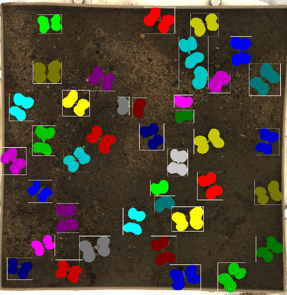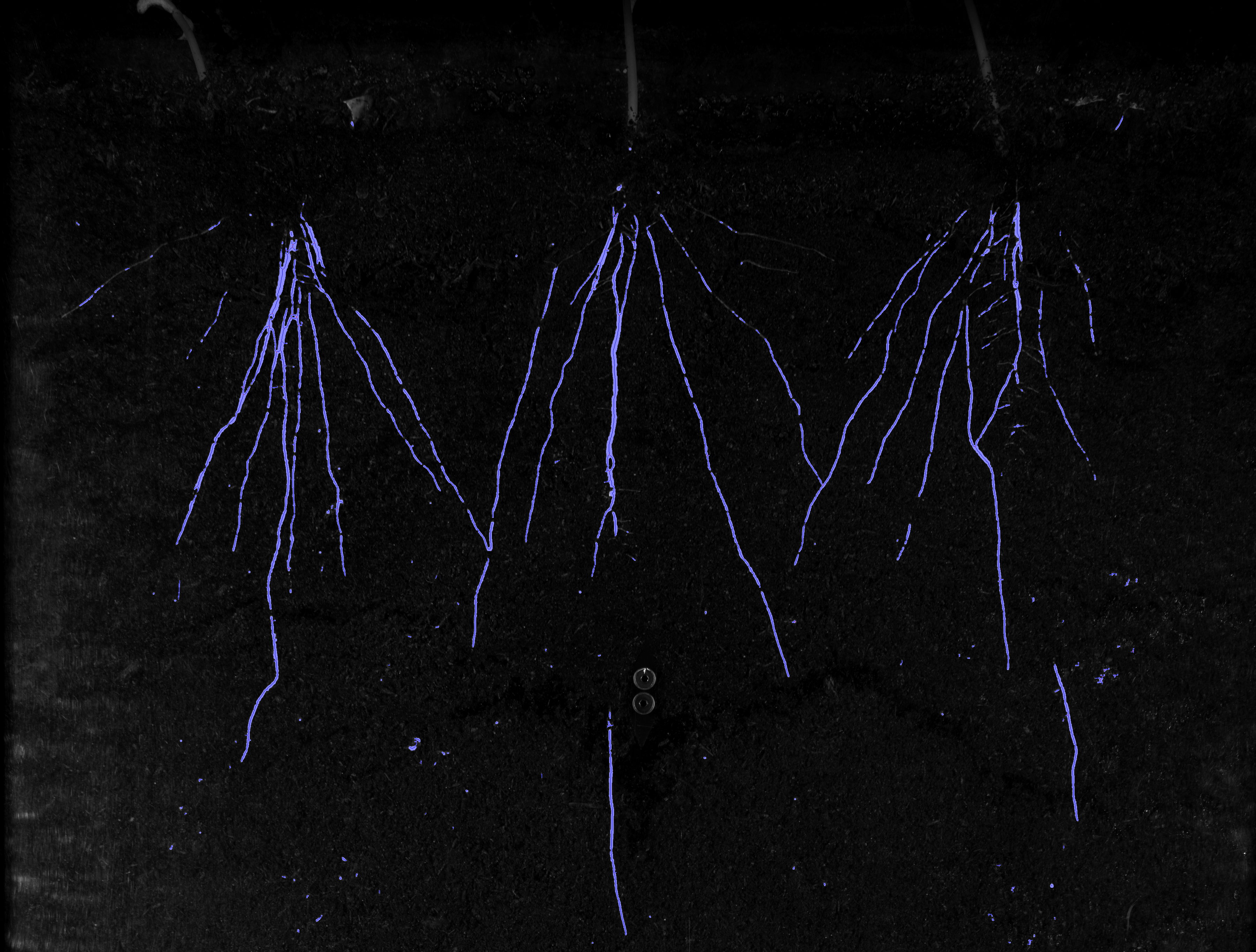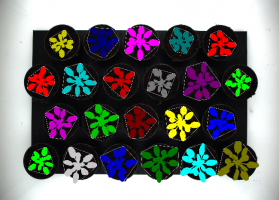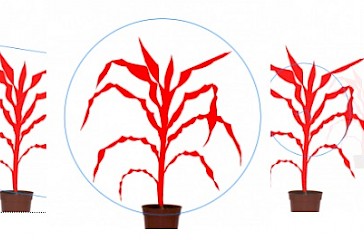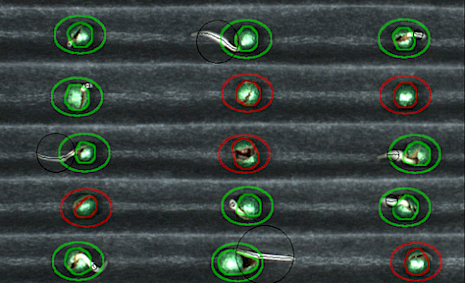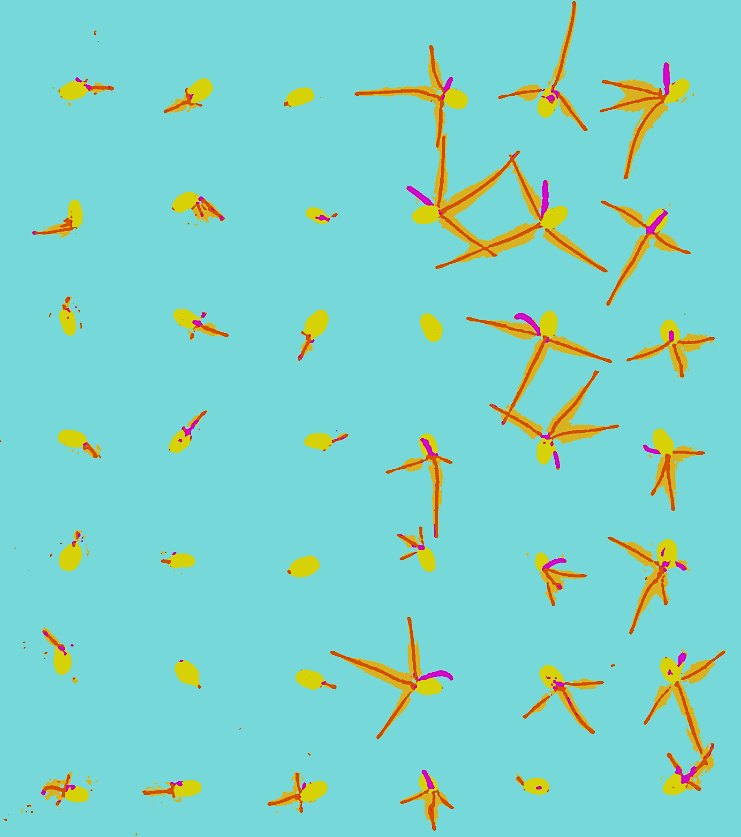Visible light, or RGB, images are „classical“ photographs. Such images are widely used to monitor plant development, plant performance, or seed germination. There is a characteristic peak of reflectance around 550 nm, due to low absorbance of the pigments in this wavelength region [1]. This reflectance makes plants look green and enables us to detect plant tissue in RGB images.
Analysing visible light images delivers information about dimensions, morphologic and geometric properties, as well as colour distributions. By measuring the dimensions of visible plant tissue over time, we can monitor the growth of plants. Changes in growth are very sensitive indicators of plant stress. Morphology and colour distributions can serve as indicators of developmental processes and stress responses.

